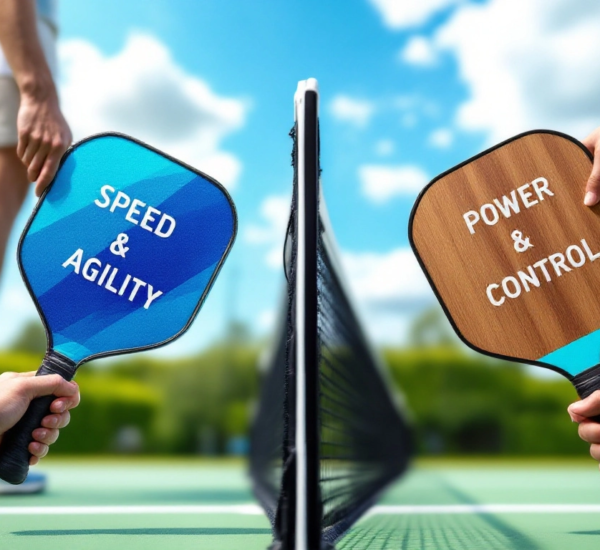Pickleball has become one of the fastest-growing sports in recent years, attracting players of all ages with its combination of fun, strategy, and physical activity. However, as with any fast-paced sport, injuries are an inevitable downside. Recovering from pickleball injuries is essential for players eager to return to the court and continue enjoying the game safely. Whether you’re dealing with a minor strain or a more serious condition, addressing the problem with proper pickleball injury rehabilitation can make all the difference in ensuring a swift and full recovery. In this guide, you’ll learn about the most common injuries, effective treatment options, post-injury exercises for pickleball, and strategies to prevent future setbacks. Let’s dive in!
Table of Contents
- Common Pickleball Injuries and Their Causes
- Steps to Begin Pickleball Injury Rehabilitation
- Effective Pickleball Injury Treatment Options
- Post-Injury Exercises for Pickleball Recovery
- Tips for Preventing Future Pickleball Injuries
Common Pickleball Injuries and Their Causes
Top Injuries in Pickleball Players
Pickleball players often face injuries such as sprains and strains, particularly in the ankles and wrists. Shoulder issues, like rotator cuff strains or pickleball elbow (similar to tennis elbow), are also prevalent due to repetitive motions. Overuse injuries, including tendonitis and plantar fasciitis, can develop with frequent play.
Why Do These Injuries Happen?
Pickleball involves quick, multidirectional movements, making players prone to sudden strains or overstretching. Poor warm-up routines, using incorrect techniques, and overtraining also significantly increase the risk.
Recognizing the Signs of Common Injuries
If you experience sustained swelling, pain, or limited mobility, it’s important to pay attention. While some discomfort may subside with rest, symptoms like severe instability or persistent pain may require professional intervention.
To learn more about staying safe during pickleball, check out our Pickleball Safety Guide. For detailed information on sports medicine, visit the American Orthopaedic Society for Sports Medicine.
Steps to Begin Pickleball Injury Rehabilitation
Assess Your Injury with a Medical Professional
The first step in addressing any pickleball injury is obtaining a professional diagnosis. A medical expert can determine the severity of your injury through physical examination and, if needed, imaging tools such as X-rays or MRIs, allowing for a tailored recovery plan.
Rest, Ice, Compression, Elevation (RICE) Method
The RICE method is a cornerstone of initial treatment for many sports injuries. Rest the affected area, apply ice packs to minimize swelling, wrap the area with compression bandages, and elevate it to enhance circulation and prevent further inflammation.
Setting Realistic Timelines for Recovery
Healing pickleball injuries takes time. Setting clear, attainable recovery goals is key to avoiding re-injury. Patience allows your body to heal naturally while gradually regaining strength and confidence.
Learn more about injury recovery techniques in our RICE Method Guide. For additional advice, visit the Mayo Clinic.
Effective Pickleball Injury Treatment Options
Physical Therapy for Pickleball Players
A professional physical therapy program can help strengthen vulnerable areas, improve range of motion, and accelerate recovery. It also ensures you rebuild the endurance needed for gameplay while preventing future complications.
Pain Management Techniques
Over-the-counter pain relievers like ibuprofen or acetaminophen can temporarily manage discomfort. In cases of chronic pain, a doctor may recommend cortisone injections or alternative therapies. Consistently alternating between icing and applying heat can also soothe pain effectively.
Supportive Gear and Equipment
Using braces, compression sleeves, or orthotic insoles can provide added stability and reduce strain on previously injured areas. Ensuring proper footwear is critical to minimizing foot and ankle stress.
For suggestions on picking the right equipment, check out our Gear Guide for Pickleball Players. External resources like WebMD also offer excellent injury treatment advice.
Post-Injury Exercises for Pickleball Recovery
Gentle Strengthening Exercises
Start with resistance bands or light weights to rebuild strength gradually. Target key areas like shoulders, legs, or wrists depending on where your injury occurred.
Stretching and Flexibility Work
Flexibility exercises, such as hamstring stretches or shoulder rotations, are vital for improving mobility and reducing stiffness. Regular stretching helps prevent scar tissue buildup and future injuries.
When to Gradually Return to Pickleball
Look for signs of readiness, such as being pain-free during daily activities. Initially, ease into gameplay with shortened sessions and focus on maintaining proper form to avoid re-aggravating your injury.
Learn effective stretches in our Stretching for Sports Performance Guide. For more insights, visit Harvard Health.
Tips for Preventing Future Pickleball Injuries
Warming Up and Cooling Down
Always allocate time to warm up before matches with light cardio and dynamic stretches. After games, cooling down with gentle movements can minimize recovery time and stiffness.
Scheduling Rest Days
Incorporate regular rest days into your pickleball routine to allow muscles to repair. Overtraining can lead to chronic pain or repetitive strain injuries.
Maintaining Proper Technique
Take lessons from a coach to refine your form and reduce the risks of overexertion or improper swings. Developing good habits early in your play can protect you in the long term.
Check out our Pickleball Training Tips for more advice, or consult guidelines from the National Academy of Sports Medicine.
Frequently Asked Questions
What are the most common injuries in pickleball, and how are they treated?
Sprains, strains, tendonitis, and muscle injuries are the most common. Treatments may include the RICE method, physical therapy, and supportive equipment.
What are the best post-injury exercises for pickleball recovery?
Strength training and flexibility exercises tailored to the injured area are ideal, along with consistent warm-up and cooldown routines.
How long does it take to recover from typical pickleball injuries?
Recovery time depends on the severity of the injury. Minor strains can heal within weeks, while more severe cases may take months.
How can I prevent recurring injuries from pickleball?
Focus on proper warm-ups, good technique, and wearing supportive gear. Scheduling rest days and using professional coaching also help mitigate risks.
When should I seek professional help for a pickleball injury?
If pain persists or worsens after a few days of treatment, or if you experience swelling, instability, or limited mobility, consult a physician.
Conclusion
Recovering from pickleball injuries requires patience, consistent effort, and a commitment to proper treatment and rehabilitation. By following medical advice, incorporating post-injury exercises, and carefully easing back into play, you can reduce the risk of recurring issues and continue enjoying this exciting sport. Don’t forget to prioritize prevention with good form, supportive gear, and regular rest days. Ready to bounce back from your injury? Take the first steps to recovery and keep smashing on the pickleball court!




